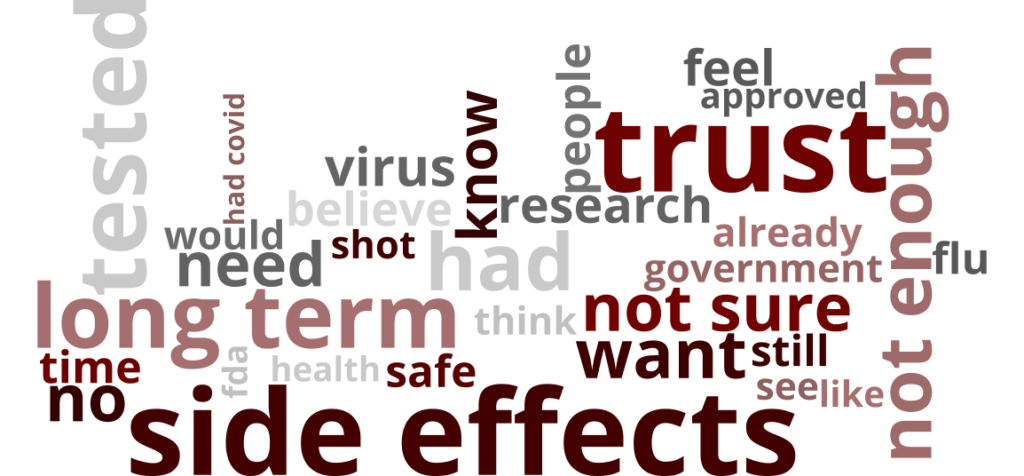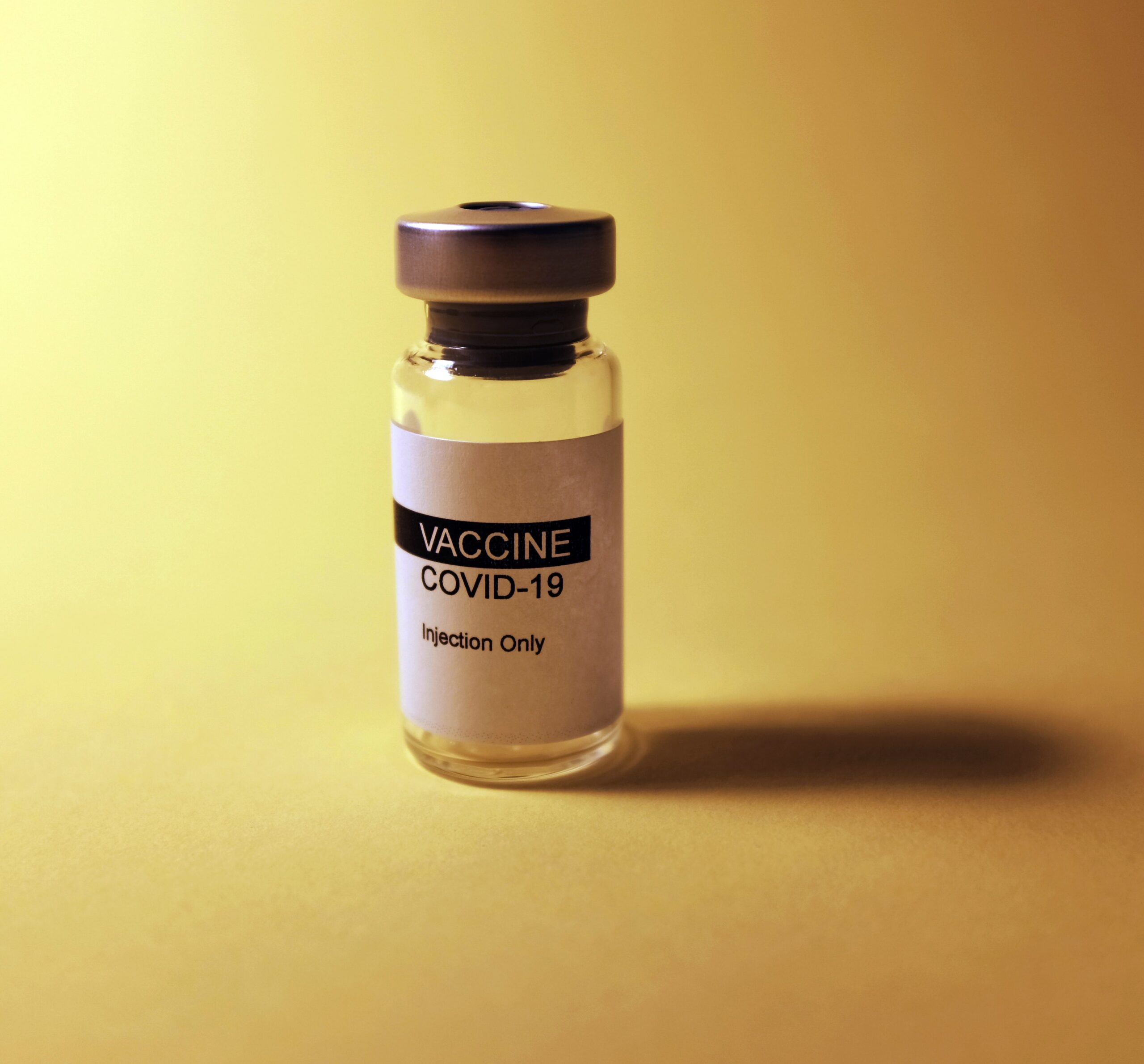What factors are driving vaccine hesitancy?
In our large-scale survey, we asked all participants if they had already receiving at least one dose of a COVID-19 vaccine or if they were planning on receiving a dose. For any participants who answered that they were unsure if they wanted to receive the vaccine or sure that they did not want to receive the vaccine, we asked them to share why they were not obtaining the vaccine. Some frequent words in the responses are shown on the right.
Using the open-ended responses and the Twitter handles shared by respondents, we can expand our understanding of vaccine hesitancy by analyzing the respondents’ open-ended responses and social media posts. As we begin to understand the factors contribute to vaccine hesitancy, we can make recommendations about how to reduce this hesitancy.


Suggested Citation: Bode, L., Pasek, J., Raghunathan, T., Singh, L., Vanarsdall, R., & Wang, Y. (2022). Choices Around Vaccinating Children Against COVID-19. MOSAIC Data Brief: August 2022. Measuring Online Social Attitudes and Information Collaborative.
Suggested Citation: Pasek, J., Bode, L., Raghunathan, T., & Singh, L. (2021). Why Some People Choose to Vaccinate and Others Do Not. MOSAIC Data Brief: December 2021. Measuring Online Social Attitudes and Information Collaborative.
Suggested Citation: Bode, L., Pasek, J., Raghunathan, T., & Singh, L. (2021). Explaining vaccine hesitancy. MOSAIC Data Brief: October 2021. Measuring Online Social Attitudes and Information Collaborative.
Subgroup team members include Leticia Bode, Joshua Pasek, Trivellore Raghunathan, and Lisa Singh.

